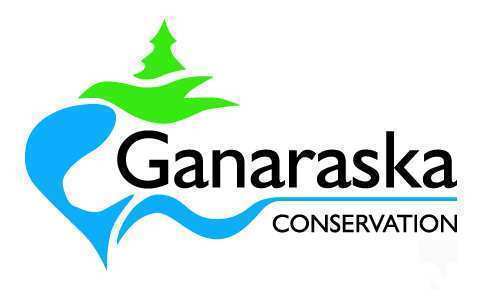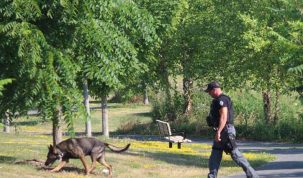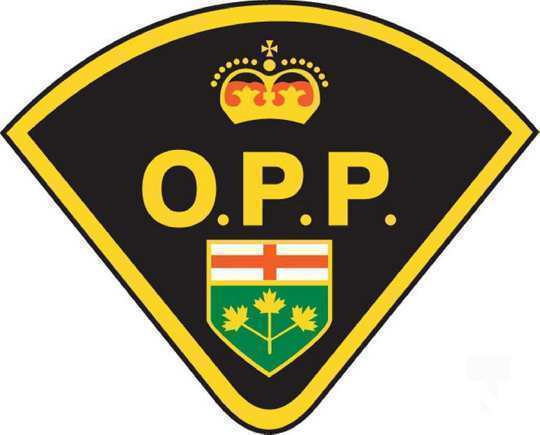The phones at the Ganaraska Region Conservation Authority (GRCA) have been ringing off the hook with calls regarding Gypsy moths.
The Gypsy moth (Lymantria dispar) is an invasive species that was brought to North America from Europe and escaped during a failed silkworm breeding experiment in Massachusetts in 1869. They were first detected in Ontario in 1969; however, widespread defoliation did not occur until 1981.
The Gypsy moth is best identified in their larval stage (caterpillars). These six centimeter long caterpillars can be distinguished from other native species by their grey bristles and two rows of district blue and red dots. The caterpillars will venture out of their hiding places at night when they are safe from predators and eat all of the leaves in their path. A single Gypsy moth caterpillar can consume an average of one square meter of leaves. In a year like this, that can result in defoliation of tree stands in a matter of days.
Although it is frightening to see your trees stripped of their leaves, they will most likely survive. It takes 50% defoliation or greater over repeated years to cause mortality of healthy trees. Infected trees will need time to recover, and may grow slower or have a smaller crown the following year. When a large infection year corresponds with a drought year, the trees are under a great deal of stress and may struggle more next year. Giving these trees a little extra TLC and preventing the Gypsy moths from infecting it again are key to the tree’s survival.
One of the questions the GRCA has been asked is whether there are spraying programs to remove the moths from this area. Locally there are no spraying programs; but the Ministry of Natural Resources and Forestry, through their forest health program, has determined the Gypsy moth population self-regulates after an outbreak due to increase in viruses. Therefore, after an outbreak year, the population will collapse; the Gypsy moth population cyclically reaches outbreak levels every seven to ten years before eventually collapsing.
If you are a landowner that wants to protect your trees from large infestations, there are a few simple things that you can do. If you have a large woodland to manage, you could consider creating your own spraying program with surrounding neighbors. The pesticide used to spray for Gypsy moths is a biological pesticide called BKT. Unlike other pesticides that may be harmful to humans and other wildlife, BKT is a bacteria (Bacillus thuringiensis) that only targets caterpillars.
However, if you are managing a few trees, you can manage your property by destroying egg masses, burlap wrapping the trunk of your tree to capture caterpillars and female moths, or using pheromone traps to capture males. In any pest management, it is encouraged to use an Integrated Pest Management (IPM) strategy. This means to use a combination of removal techniques to get the best results. Therefore, if you remove egg masses in the fall, the life cycle has been stopped short and there will be less caterpillars to capture.
If you would like more information on how to manage for Gypsy moths on your property, see In the Know about Invasive Species at //www.grca.on.ca/terrestrial-ecology/ or contact GRCA’s Watershed Biologist Lindsay Champagne at 905.885.8173 / lchampagne@grca.on.ca.
























